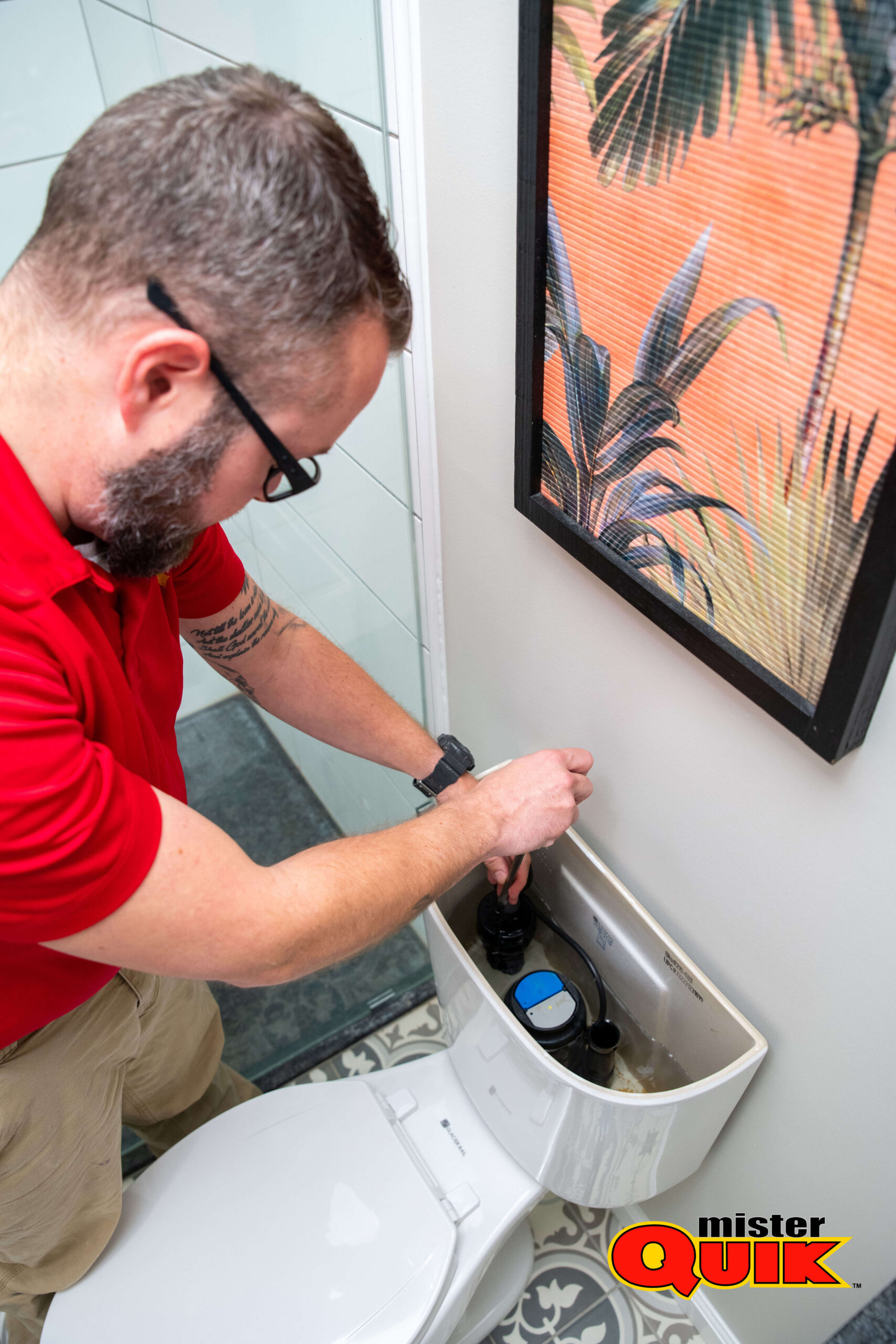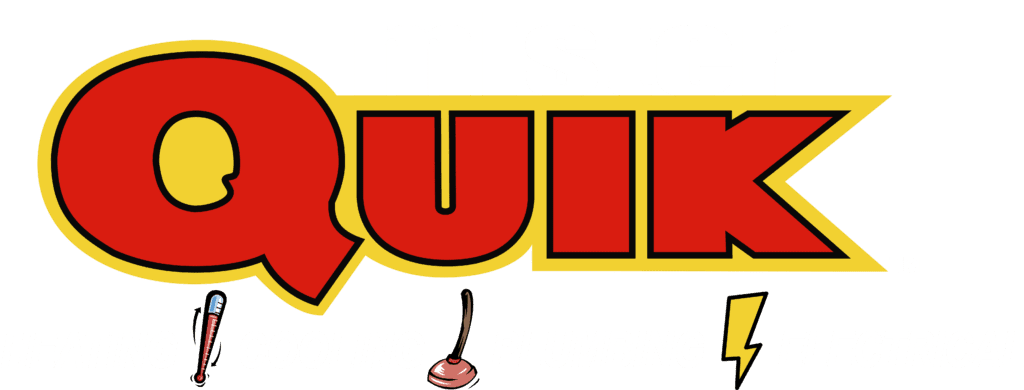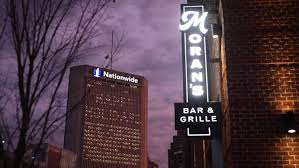Best Anderson Over Flowing Toilets Repair Services

Overflowing toilets repair near me
Experiencing an overflowing toilet can be a messy and stressful situation, but finding prompt and reliable repair services nearby is essential for a quick resolution. At Mister Quik Home Services in Anderson, we understand the urgency of this issue and offer expert solutions to address overflowing toilets efficiently. Here’s what you need to know about overflowing toilet repair near you:
- Prompt Response: Our team provides fast response times to address overflowing toilet emergencies, minimizing water damage and restoring functionality quickly.
- Experienced Technicians: Trust in our skilled technicians who are equipped with the knowledge and tools to diagnose and repair the underlying cause of the overflowing toilet.
- Comprehensive Assessment: We conduct a thorough assessment of your toilet and plumbing system to identify the root cause of the overflow and any potential damage.
- Clog Removal: We utilize specialized equipment to effectively remove any blockages or obstructions causing the toilet to overflow, restoring proper flushing.
- Valve and Flapper Inspection: Our technicians inspect the toilet’s fill valve and flapper to ensure proper operation and prevent future overflow incidents.
- Toilet Tank Adjustment: We adjust the water level in the toilet tank to the appropriate height to prevent overflow and optimize flushing performance.
- Pipe Inspection: We inspect the plumbing pipes connected to the toilet for any leaks, cracks, or damage that may contribute to overflow issues.
- Seal Replacement: If necessary, we replace worn-out seals and gaskets to prevent water leaks and ensure a tight seal between toilet components.
- Preventive Maintenance Tips: We offer guidance on preventive maintenance measures to help you avoid future incidents of overflowing toilets, such as proper toilet use and regular inspections.
- Emergency Services: Our team is available 24/7 to handle overflowing toilet emergencies, providing peace of mind knowing that help is just a phone call away.
In conclusion, when faced with an overflowing toilet, trust Mister Quik Home Services in Anderson for prompt, reliable, and expert repair solutions. Our dedicated team is committed to restoring your toilet’s functionality and ensuring your peace of mind.
Overflowing toilet solution in Anderson
Dealing with an overflowing toilet can be a stressful and messy situation, but knowing the right solutions can help you quickly resolve the issue. Whether you’re experiencing a minor clog or a more serious plumbing problem, understanding how to address an overflowing toilet in Anderson is essential for maintaining a functional and hygienic bathroom. Let’s explore some effective strategies and tips to tackle this common household problem.
Here are some key solutions for addressing an overflowing toilet in Anderson:
If you notice your toilet overflowing, act quickly to prevent water damage and minimize the mess. Shut off the water supply to the toilet by turning the valve located behind the toilet near the floor.
Using a plunger is often the first line of defense against a clogged toilet. Ensure you have a proper seal around the drain opening and plunge with firm, steady pressure to dislodge the blockage.
Pouring hot water mixed with dish soap into the toilet bowl can help break down grease and loosen stubborn clogs. Let the mixture sit for a few minutes before attempting to flush again.
If plunging doesn’t resolve the issue, using a plumbing auger or snake can help clear more stubborn clogs. Insert the auger into the toilet drain and rotate it to break up and remove the obstruction.
Chemical drain cleaners can be effective for dissolving organic matter causing clogs. However, use them cautiously and follow the manufacturer’s instructions carefully to avoid damaging your plumbing system or harming the environment.
If you’re unable to resolve the overflowing toilet problem on your own, it may be time to seek professional assistance. A licensed plumber can assess the situation, identify any underlying issues, and provide appropriate repairs or replacements as needed.
Regular maintenance practices, such as avoiding flushing non-flushable items, using toilet paper sparingly, and installing a toilet with a powerful flush mechanism, can help prevent future toilet clogs and overflows.
In case of severe or recurring toilet overflows, having access to emergency plumbing services can provide peace of mind. Emergency plumbers can respond promptly to resolve the issue and prevent further damage to your home.
By following these solutions and taking preventive measures, you can effectively address an overflowing toilet in Anderson and maintain a properly functioning plumbing system in your home.
In conclusion, dealing with an overflowing toilet requires prompt action and the right techniques to resolve the issue safely and effectively. Whether it's using a plunger, employing DIY remedies, or seeking professional help, knowing your options can help you handle toilet overflows with confidence and ease. Mister Quik Home Services in Anderson is here to assist you with any plumbing emergencies, including overflowing toilets, ensuring your home's plumbing system operates smoothly and efficiently.
If your toilet is overflowing, immediately turn off the water supply valve behind the toilet to stop the flow of water into the bowl and prevent further flooding.
Toilet overflow can occur due to a clog in the drain pipe, a malfunctioning toilet float or fill valve, or excessive water pressure in the tank.
To stop a toilet from overflowing, try using a plunger to remove the clog, adjusting the float or fill valve to regulate water flow, or shutting off the water supply valve until the issue is resolved.
Depending on the cause of the overflow, you may be able to fix it yourself by using a plunger or adjusting the toilet’s internal components. However, if the issue persists or if you’re unsure how to proceed, it’s best to call a plumber for assistance.
To prevent toilet overflow, avoid flushing large amounts of toilet paper or foreign objects down the drain, use a toilet auger to remove stubborn clogs, and perform regular maintenance on your toilet’s internal components.
Fix overflowing toilet
Dealing with an overflowing toilet can be a stressful situation for any homeowner, but knowing how to fix it promptly can prevent water damage and restore functionality. Understanding the steps involved in fixing an overflowing toilet can empower you to tackle the issue confidently and effectively. Let’s delve into the key strategies for resolving this common plumbing problem.
Here’s what you need to know about fixing an overflowing toilet:


The first step is to stop the water from overflowing. You can do this by locating the shut-off valve behind the toilet and turning it clockwise to cut off the water supply. If you can’t find the shut-off valve or it’s not working, remove the tank lid and lift the float ball or cup to stop the flow of water into the tank.
Use a plunger to try and dislodge any blockages causing the overflow. Ensure there is enough water in the bowl to cover the plunger, then place it firmly over the drain hole and push and pull in a vigorous motion to create suction. Repeat this several times until the water begins to drain.
If plunging doesn’t resolve the issue, there may be a more stubborn clog in the drain pipe. Use a toilet auger or plumbing snake to carefully navigate the drain and break up any blockages. Insert the auger into the drain opening and rotate it clockwise until you feel resistance, then continue to push and twist to dislodge the clog.
Sometimes, an overflowing toilet can be caused by a malfunctioning fill valve that is allowing too much water to enter the tank. Check the fill valve for any signs of damage or debris blocking the mechanism. You may need to adjust the float arm or replace the fill valve if it’s faulty.
A clogged vent stack can also lead to toilet overflow by preventing proper air flow in the plumbing system. If you suspect a vent stack blockage, you may need to climb onto the roof and clear it using a plumbing snake or hose.
After successfully fixing the overflowing toilet, it’s essential to clean up any water or mess to prevent water damage and maintain hygiene. Use a disinfectant cleaner to sanitize the toilet bowl, floor, and surrounding areas thoroughly.
Implement preventive measures to avoid future toilet overflows, such as avoiding flushing excessive amounts of toilet paper or foreign objects down the drain, regularly maintaining your plumbing system, and addressing any issues promptly.
Toilet overflowing from tank
Experiencing a toilet overflowing from the tank can be frustrating and messy, but understanding the potential causes and solutions can help you address the issue effectively. From simple fixes to more complex problems, knowing what to look for can save you time and money in resolving the problem. Here’s everything you need to know about toilet overflow from the tank:



A malfunctioning fill valve can lead to excessive water entering the tank, causing it to overflow. Inspect the fill valve for any signs of wear or damage, such as leaks or mineral buildup.



A defective flapper can prevent the toilet from properly flushing, resulting in water continuously running into the tank and causing overflow. Check the flapper for proper alignment and replace it if necessary.


Incorrect water level settings in the tank can also contribute to overflow issues. Ensure that the water level is set to the manufacturer’s recommended height to prevent overflowing.




A clogged drain pipe or trap can cause water to back up into the tank, leading to overflow. Use a plunger or plumbing snake to clear any obstructions in the drain line.




In rare cases, a cracked or damaged toilet tank can result in water leakage and overflow. Inspect the tank for any visible cracks or signs of damage, and replace it if needed.




Poor installation of toilet components, such as the fill valve or flapper, can lead to operational issues and eventual overflow. Ensure that all toilet parts are installed correctly according to the manufacturer’s instructions.
In conclusion, dealing with a toilet overflowing from the tank can be a nuisance, but with the right knowledge and troubleshooting steps, you can effectively address the problem. Remember to inspect and maintain your toilet regularly to prevent future overflow incidents and ensure smooth operation. Mister Quik Home Services in Anderson is here to provide expert assistance with any toilet overflow issues you may encounter, offering prompt and reliable solutions to restore your plumbing system's integrity.
How much does a plumber cost to fix a toilet
If you’re wondering about the cost of hiring a plumber to fix a toilet, several factors influence the final price. At Mister Quik Home Services in Anderson, we aim to provide transparency in pricing to help you make informed decisions. Here’s a breakdown of what determines the cost of toilet repairs:
1. Nature of the Issue:
The complexity of the problem, whether it’s a simple clog or a more serious issue like a damaged flange or broken seal, impacts the cost.
2. Materials Needed:
Depending on the repair, materials such as replacement parts, seals, or pipes may be required, affecting the overall expense.
3. Labor Charges:
Plumbers typically charge by the hour or by the project, with rates varying based on their expertise and the extent of the repair.
4. Emergency vs. Non-Emergency:
Emergency repairs outside regular business hours may incur additional charges for immediate service.
5. Location and Accessibility:
Factors like the toilet’s location within the house and accessibility can influence the time and effort required, thus affecting the cost.
6. Additional Services:
If additional services like leak detection, pipe inspection, or preventive maintenance are requested, they may add to the total cost.
7. Warranty and Guarantees:
Some plumbers offer warranties on their workmanship or guarantees for customer satisfaction, which can impact pricing.
8. Local Market Rates:
Prices may vary depending on the prevailing rates in your area and the competition among plumbing service providers.
9. Permit Requirements:
For extensive repairs or installations, permit fees may be necessary, contributing to the overall cost.
10. Insurance Coverage:
Depending on your homeowner’s insurance policy, some or all of the repair costs may be covered, reducing your out-of-pocket expenses.
In conclusion, while the cost of hiring a plumber to fix a toilet can vary based on several factors, Mister Quik Home Services in Anderson is committed to providing transparent pricing and quality service to meet your plumbing needs effectively. Trust us to deliver reliable solutions at competitive rates, ensuring peace of mind for your home.
Toilet overflow solution
Dealing with a toilet overflow can be stressful and messy, but knowing how to handle it effectively is essential to prevent water damage and restore functionality. Whether it’s a minor clog or a more serious issue, having the right solution can save you time, money, and frustration. Let’s explore some practical steps and solutions to address toilet overflows and keep your bathroom running smoothly.
Here are some key strategies for handling a toilet overflow:
If you notice the toilet overflowing, the first step is to stop the flow of water. Locate the shut-off valve near the base of the toilet and turn it clockwise to stop the water supply. This will prevent further flooding and minimize water damage.
In many cases, toilet overflows are caused by clogs in the drain pipe. Use a plunger to try to dislodge the blockage by creating a seal around the drain and applying firm, rhythmic pressure. If plunging doesn’t work, you may need to use a plumbing snake or auger to break up and remove the obstruction.
After stopping the overflow and clearing the blockage, it’s essential to clean up any water and sanitize the affected area to prevent mold and bacteria growth. Use towels or a wet/dry vacuum to remove excess water, and disinfect the area with a mixture of water and bleach or a commercial disinfectant.
Once the immediate issue is addressed, inspect the toilet and surrounding area for any signs of damage. Check for water stains on the walls or floor, warped baseboards, or soft spots in the flooring, which could indicate water damage. If you notice any structural damage, or were unsuccessful in clearing the clog, it’s best to contact a professional plumber for further assessment and repairs.
To prevent future toilet overflows, avoid flushing items that can cause clogs, such as paper towels, wipes, or feminine hygiene products. Consider installing a toilet overflow alarm or a pressure-assisted flush system to alert you to potential issues and improve flushing efficiency.
Regular maintenance, such as periodic drain cleaning and inspections, can help prevent toilet overflows by identifying and addressing potential clogs or plumbing issues before they escalate. Schedule routine maintenance with a professional plumber to keep your plumbing system in top condition.
By following these steps and implementing effective toilet overflow solutions, you can handle overflow incidents quickly and effectively, minimizing damage and restoring peace of mind.
In conclusion, knowing how to handle a toilet overflow is essential for maintaining a functional and hygienic bathroom environment. With the right strategies and solutions in place, you can address overflow incidents promptly and prevent future issues from occurring.
Mister Quik Home Services in Anderson is here to assist you with all your plumbing needs, including toilet overflow solutions, ensuring your home’s plumbing system operates smoothly and efficiently.
Troubleshoot Checklist:
- Locate and turn off the water supply valve behind the toilet to halt water flow.
- If the valve is inaccessible or broken, lift the tank’s float ball or cup to stop water inflow.
- Use a plunger with firm pressure to dislodge clogs in the drain pipe.
- If plunging fails, employ a plumbing snake or auger to break up and remove obstructions.
- Remove excess water using towels or a wet/dry vacuum, then disinfect the area thoroughly.
- Check for structural damage like water stains, warped baseboards, or soft spots in the flooring.
- Inspect the toilet and surrounding area for signs of structural damage.
- Contact a professional plumber for further assessment and repairs if necessary.
- Avoid flushing non-flushable items and consider installing overflow alarms.
- Schedule routine maintenance with a professional plumber to prevent future issues.









